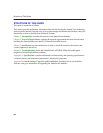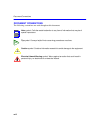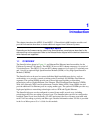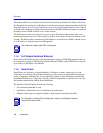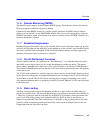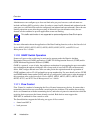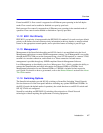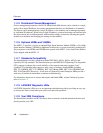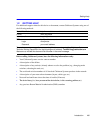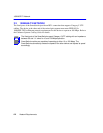
Overview
Introduction 1-5
1.1.6 Remote Monitoring (RMON)
The SmartSwitches support all nine Ethernet RMON groups. The Statistics, Alarms, Events and
History groups are enabled on all ports by default.
Cabletron Systems RMON Actions is a vendor-specific extension of RMON and provides the
ability to set an “Action” on any SNMP MIB variable. The Action can be triggered by setting an
RMON Event and/or Alarm. An example of an Action would be to turn off a MIB-2 interface if a
broadcast threshold is crossed.
1.1.7 Broadcast Suppression
Broadcast Suppression enables a user to set a desired limit of receive broadcast frames per port/per
second to be forwarded out the other ports on the module up to the set limit. Any broadcast frames
above this specified limit are dropped. In the event that broadcast frames are being suppressed,
multicast and unicast frames continue to be switched.
1.1.8 Port/VLAN Redirect Functions
The port redirect function, also referred to as “Port Mirroring,” is a troubleshooting tool used to
map traffic from a single source port to a single destination port within the device. The feature
allows frames, including those with errors, to be copied and sent to an analyzer or RMON probe.
The analyzer or RMON probe will see the data as if it were directly connected to the LAN segment
of the source port.
The VLAN redirect function is similar to the port redirect function except that the frames received
by the device are redirected to a designated destination port according to the VLAN classification
of the frames received. The VLAN redirect function does not support redirecting errors, and is
only supported when the device is operating as an 802.1Q switch. Multiple VLANs can be directed
to the same ports.
1.1.9 Rate Limiting
The Rate Limiting feature enables the SmartSwitch device to have control of traffic rates on a
per-port, per-priority basis. The network administrator can configure a rate limit (from 100 kbps to
1 Gbps) for a given port with an associated list of IEEE 802.1p priorities (which can include one,
some, or all of the eight priority levels defined in 802.1p). Each rate limit is specified as an
inbound or an outbound limit. The combined rate of all traffic on the port that matches the listed
priorities cannot exceed the programmed limit. If the rate exceeds the defined limit, frames are
dropped until the rate falls below the limit.




